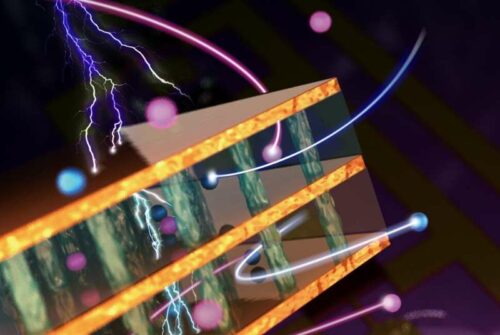Researchers have developed an electrochemical transistor which allows us to speak the language of both biological systems and electronics systems.

Transistor is considered as one of the most revolutionary inventions in history. As the complete technological era is dependent on transistors for its existence. Transistors have made it possible for tonnes of data to be stored just on our palm.
A team of researchers from Northwestern University has developed a revolutionary transistor that is expected to be ideal for lightweight, flexible, high-performance bioelectronics. This transistor is compatible with blood and water and can amplify important signals, making it especially useful for biomedical sensing.
The vertical electrochemical transistor is based on a new kind of electronic polymer and a vertical, instead of planar, architecture. It conducts both electricity and ions and is stable in air. The design and synthesis of new materials and the transistor’s fabrication and characterization required the collaborative expertise of chemists, materials scientists and biomedical engineers.
Researchers say that “This exciting new type of transistor allows us to speak the language of both biological systems, which often communicate via ionic signaling, and electronic systems, which communicate with electrons. The ability of the transistors to work very efficiently as ‘mixed conductors’ makes them attractive for bioelectronic diagnostics and therapies.”
The vertical structure of the transistor helps in its stacking, thus enabling researchers to design very dense electrochemical complementary circuits, which is impossible for the conventional planar electrochemical transistors. To make more reliable and powerful electronic circuits, two types of transistors are needed: p-type transistors that carry positive charges and n-type transistors that carry negative charges. These types of circuits are called complementary circuits. The challenge researchers have faced in the past is that n-type transistors are difficult to build and are typically unstable. This is the first work to demonstrate electrochemical transistors with similar and very high performance for both types (p+n) electrochemical transistors. This resulted in the fabrication of very efficient electrochemical complementary circuits.
Reference : Wei Huang et al, Vertical organic electrochemical transistors for complementary circuits, Nature (2023). DOI: 10.1038/s41586-022-05592-2





